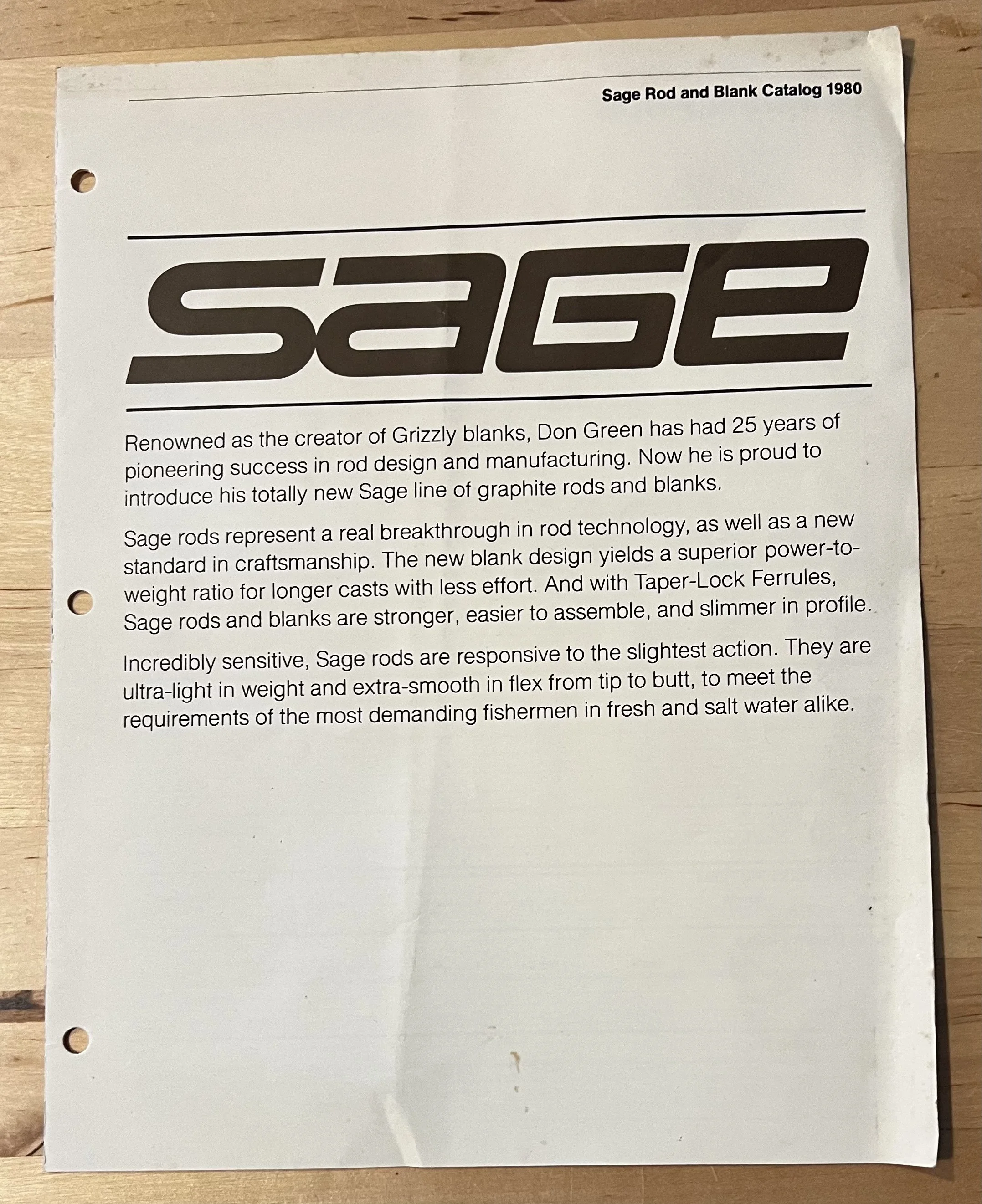Don Green: Father of Fast Action
Photo credit: Sage Fly Fishing
For 11 years, I had the incredible fortune to work for Far Bank Enterprises — the umbrella company of the fly fishing brands Sage, Redington, RIO Products, and Fly Water Travel. For roughly half of my time at the company, I worked at the Bainbridge Island, Washington headquarters, where Sage fly rods have been manufactured since the company’s founding in 1979 by Don Green.
By the time I started, Don had retired but I met and spoke with him whenever he stopped by the office. Additionally, the R&D Department (of which I was a member) spent a day with Don, listening to him talk about the founding of the company, his fly fishing roots, approach to business, life, and more. His kindness, wisdom, and humility left a lasting impression on me. Don’s impact on the world of fly fishing and the employees and families of the business he founded are immense and will last forever.
In January, 2024, Don passed away, leaving behind a legacy of fly fishing that cannot be overstated. To celebrate his life, I endeavored, along with several other former Sage co-workers, to capture Don’s story in words and in a memorial display of sorts. The project evolved over the last 18 months but came to fruition this week, as a commemorative plaque was hung in the new retail space addition at Red’s Fly Shop on the Yakima River, along with several of Don’s replica fish mounts.
What follows here is my ‘full-length’ version of Don’s story, which was used as fodder for the text that appears in the plaque, along with some photos of the installation at Red’s. If you’re in the Ellensburg, WA area, this fly shop (and guide service, lodge, restaurant, and bar) is well worth the visit!
Special thanks to my partners in this project, who also happen to be former managers and ongoing mentors: Kurt Van Wyck and Marc Bale. Thanks to the Green family for trusting us to tell this story and thanks to Steve Joyce at Red’s for welcoming this display. Lastly, thanks to Don Green, for what he created, passed on, and left to us all.
Photo credit: Rudi Heger & The Green Family
Don Green
Founder of Sage
5/2/1931 - 1/25/2024
Beginnings & Early Career
Don Green was born on May 2, 1931 and he grew up on a farm outside of Kent, Washington — south of Seattle, along the Green River. From a young age, Don was an enthusiastic angler, fishing the nearby Green River as well as Angel Lake, where the family had a cabin, for steelhead, Pacific salmon, and trout. In addition, Don was a ‘tinkerer,’ interested in constructing things and the way things worked. As a high schooler, Don started working for a newspaper printing press and in doing so, became intrigued by the machines and production processes. Around the same time, Don’s aunt gifted him a small shed in which to set up a workbench and his tools. There, in his first shop, Don dis- and re-assembled all manner of small machines, and even built a rudimentary telephone that he used to call his nearby friend.
Eventually, Don found his way to Schoff Tackle Company, also in Kent, and began working on their manufacturing processes of lures and flies. Here, his personal passions for angling and professional interests in mechanics were combined, setting the stage for what would become Don’s life work. While at Schoff’s, an outside investor proposed a new venture constructing fishing rod blanks — this turned into Lamiglas and Don was the first employee. Here, Don not only learned how to manufacture blanks but to do so, he had to make the machines that made the blanks, including rolling tables, cellophane wrapping, and ovens. These skillsets were extremely unique at the time and, combined with his aptitude as an angler and ability to conceptualize the requirements of the rods while on the water, he put them all to use when he founded Grizzly Fiberglass in 1954.
With Grizzly, Don began traveling around the country, experiencing first-hand the different fisheries where his blanks would be used, and supplying blanks to hundreds of rod builders, including the local company Fenwick. By that time, Don was feeling the effects of the nearby Boeing Company, whose growth was leading to significant turnover in his manufacturing staff. So, as a hedge against his fleeting manpower, Don tested the labor force in the west side of Puget Sound, taking out a post office box on Bainbridge Island and putting a help wanted ad in the local newspaper. When he returned to the post office a month later, the pile of inquiries that awaited convinced him that manufacturing on the island would be viable, so Grizzly moved to Bainbridge in 1966.
Within a few years, Grizzly was the primary blanks supplier for Fenwick and they, in turn, had become Don’s primary customer, so the two companies eventually merged in 1969. Don continued to work at Fenwick until 1978, when the company was sold, and soon thereafter he began applying all the rod design, manufacturing, and distribution knowledge he had amassed into a brand-new company, using the same name as Bainbridge Island’s ‘downtown’ neighborhood, Winslow. The name was short-lived however, and in in 1980, the name that’s now synonymous with fly fishing was born: Sage.
The Story of Sage, Graphite & “Fast Action”
In many ways, Don Green was the right person in the right place at the right time. While his angling expertise and abilities to design and manufacture fly rod blanks led to the founding of Sage, it was his proximity to Boeing in the late-1970’s that resulted in his access to a revolutionary material at the time: graphite. Substantially lighter and stronger than fiberglass (the material that Don had worked with previously), graphite opened up doors of fly rod blank design that had been otherwise locked. Specifically, the new material allowed Don to realize his vision of a fly rod blank that ‘never ran out of power,’ resulting in a dramatic increase in line speed. This performance upgrade was extremely beneficial for Pacific Northwest anglers, who often fish wide rivers with big flies and sinking lines in high winds, as well as saltwater anglers, who usually have to deliver long casts quickly and accurately to moving targets. The concept was coined Reserve Power, which was shortened to RP for its release as an entire family of rods in 1984. This translates to Fast Action today, but as stated in the 1982 Sage catalog, “the Sage action animates rods and blanks that are designed to help the beginning caster, enhance the average fisherman’s efforts, and excite the expert.”
The RP rod family firmly established Sage as a leader in the performance fly rod market and anglers around the country and even the globe came to revere Don’s actions and quality of craftsmanship. Moving forward, every evolution in graphite technology — different combinations and configurations of carbon fibers and resins — brought with it an opportunity to further enhance fly rod performance. At the same time, under the foresight of Don, Sage’s long-time composites engineer Steve Greist, and others, the company’s manufacturing capabilities evolved as well. The result was ongoing introductions of fly rods with improved performance for anglers fishing in freshwater, saltwater, and for anadromous species. The rod families that followed the RP still resonate among fly anglers today and are seen on the water across the world: LL, RPL, RPL+, XP, Z-Axis, ONE, X, R8, and many others.
Approach to Business
Throughout Don’s career, he held a simple yet steadfast approach to doing business that guided his decisions and contributed to Sage’s great successes. Don believed in honesty, fairness, and high moral standards; lessons that were imparted on him as a boy and young adult. He never downgraded the competition but instead held faith in his product and sold it for what it was, letting the customer decide what to buy. For the entirety of his career, and even afterwards, Don fostered healthy relationships with his employees, always remaining open to talk and showing them that they were valued. Don believed in exceptional customer service and prided himself on building working relationships based on trust; he took his colleagues fishing and remembered their birthdays. Lastly, Don strived to produce top-notch advertising and product catalogs. Sage’s print catalogs are, to this day, keepsakes.
Perhaps most importantly, Don believed in making the best possible product and this philosophy is captured in Sage’s credo of Perfecting Performance. As Don put it in the 1984 Sage catalog, “My goal is to build a high-performance, well balanced, aesthetically pleasing rod that will give years and years of enjoyment and will perform and produce in a way that will enhance the fishing experience. That was my goal in the beginning, that is my goal today, and that will continue to be my goal in the future.”
Family & Faith
When Don passed on January 25, 2024, he was survived by his beloved wife of 72 years, Sue (Washburn), who grew up in Ellensburg, Washington. In fact, it was a family inheritance from Sue that funded the founding of Grizzly in 1954. Throughout all of Don’s business ventures, including the rise and eventual sale of Sage, Sue was an ever-loving, patient, and supportive partner. Don was well aware of the sacrifices that Sue and their family made so that he could drive the business. Upon retirement, Don and Sue lived their days together in Poulsbo, Washington, spending time with their large, loving family of two daughters, three sons, eight grandchildren, and seven great-grandchildren.
Faith was also very important to Don and Sue. Both are both dedicated Christians, and Don was active in Christ Memorial Church, now known as Gateway Fellowship, in Poulsbo. Don’s kindness and integrity was admired and respected not only across the global fly fishing industry but in his personal communities as well.
Florida Keys Grand Slam
Now hanging at Red’s are replicas of the Grand Slam fish (permit, tarpon, and bonefish) that Don caught during his very final day of saltwater flats fishing. In May of 1992, Don launched out of Key West, FL along with guide Ray Fecher and long-time friend and European distributor of Sage products, Rudi Heger. Early that morning, the three ran west across calm seas eventually arriving on the flats of Man Key. Immediately they were greeted with rolling tarpon all around them. Ever the gentleman, Don gave Rudi the first shots but after several misses, Don reluctantly stepped on the casting platform. Soon, a tarpon rolled within range and with one accurate cast, Don hooked it. A short while later, it was boatside, and Ray landed the magnificent fish, which was pushing 100 pounds.
Not long after, with Rudi on the bow, the three spotted a permit tailing in shallow water. The fish was happy, slowly cruising and feeding without noticing the skiff poling ever-closer. At the time, Rudi was new to flats fishing so he quickly convinced Don to take the shot. Swapping out the tarpon rod for one rigged with a crab pattern, Don made another perfect cast, and the permit ate. Immediately the fish took off, Don cleared line, and all was looking fine until a large hammerhead shark appeared, heading straight for the permit. Ray hopped down from the poling platform and started the outboard to try and scare the shark off. Over the course of a few chaotic minutes, they ran the shark off but Don’s line had gone slack. The boat was silent as Don reeled in his line, only to find that the permit had been hiding directly under the skiff. It took off again as if it had just been hooked. Eventually, Don brought the fish carefully to the boat where Ray tailed the permit.
It was early afternoon by this point and while the three ate lunch, Rudi — ever-optimistic, persistent, and also unaware of the geographic logistics and luck that would be required -- suggested that Don go for a Grand Slam. Silently, Ray considered the situation: they were an hour-and-a-half run from a bonefish flat and the tides weren’t in their favor. Nevertheless, they sprang into action and took off. While they ran, Rudi rigged a rod for bonefish in the cockpit. It was nearly 4:00 p.m. before they were poling a bonefish flat off Sugarloaf Key. Soon Ray spotted a pair of fish and Don laid down another perfect cast. The lead fish immediately inhaled the fly and took off but somehow the fly fell out and the line went slack. Almost unbelievably, with sightfishing conditions failing, Ray poled them into another shot. Once again Don exhibited his casting prowess, delivering yet another flawless presentation. The bonefish took the fly and this time, the hook held. It was Don’s one and only Grand Slam — completed in the Florida Keys, no less.
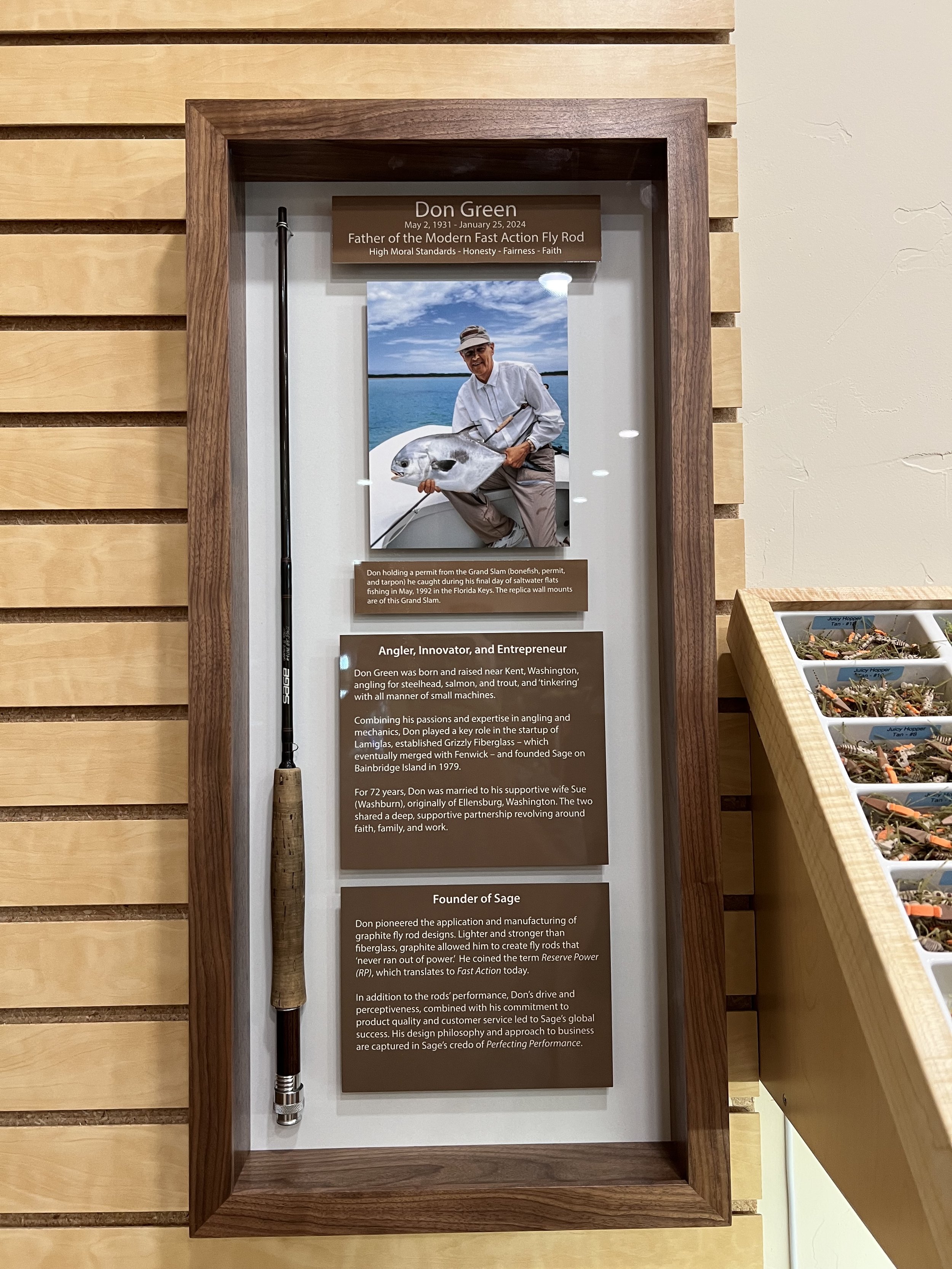
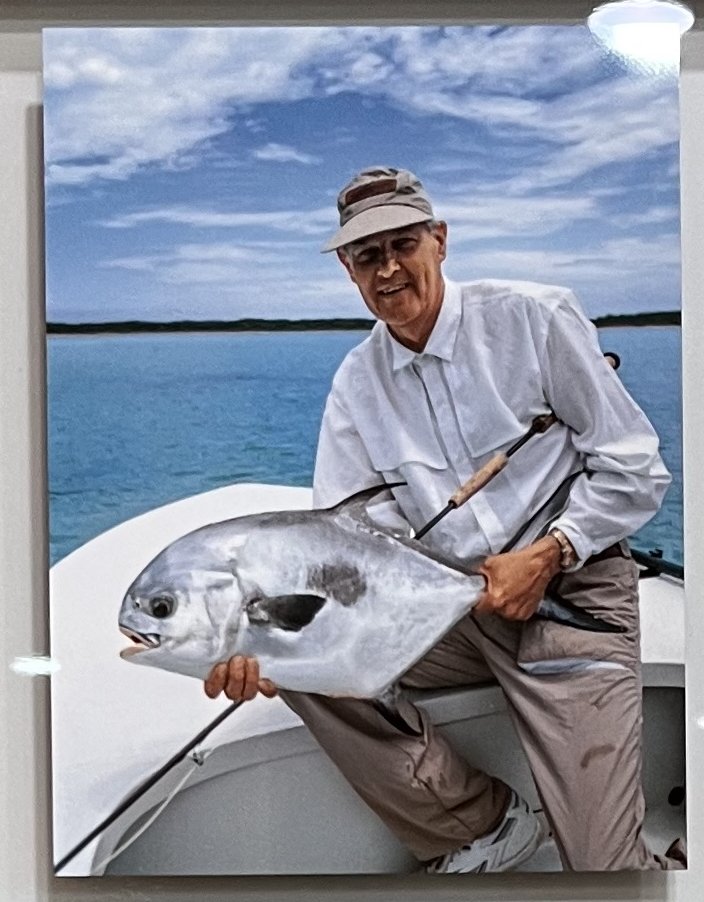
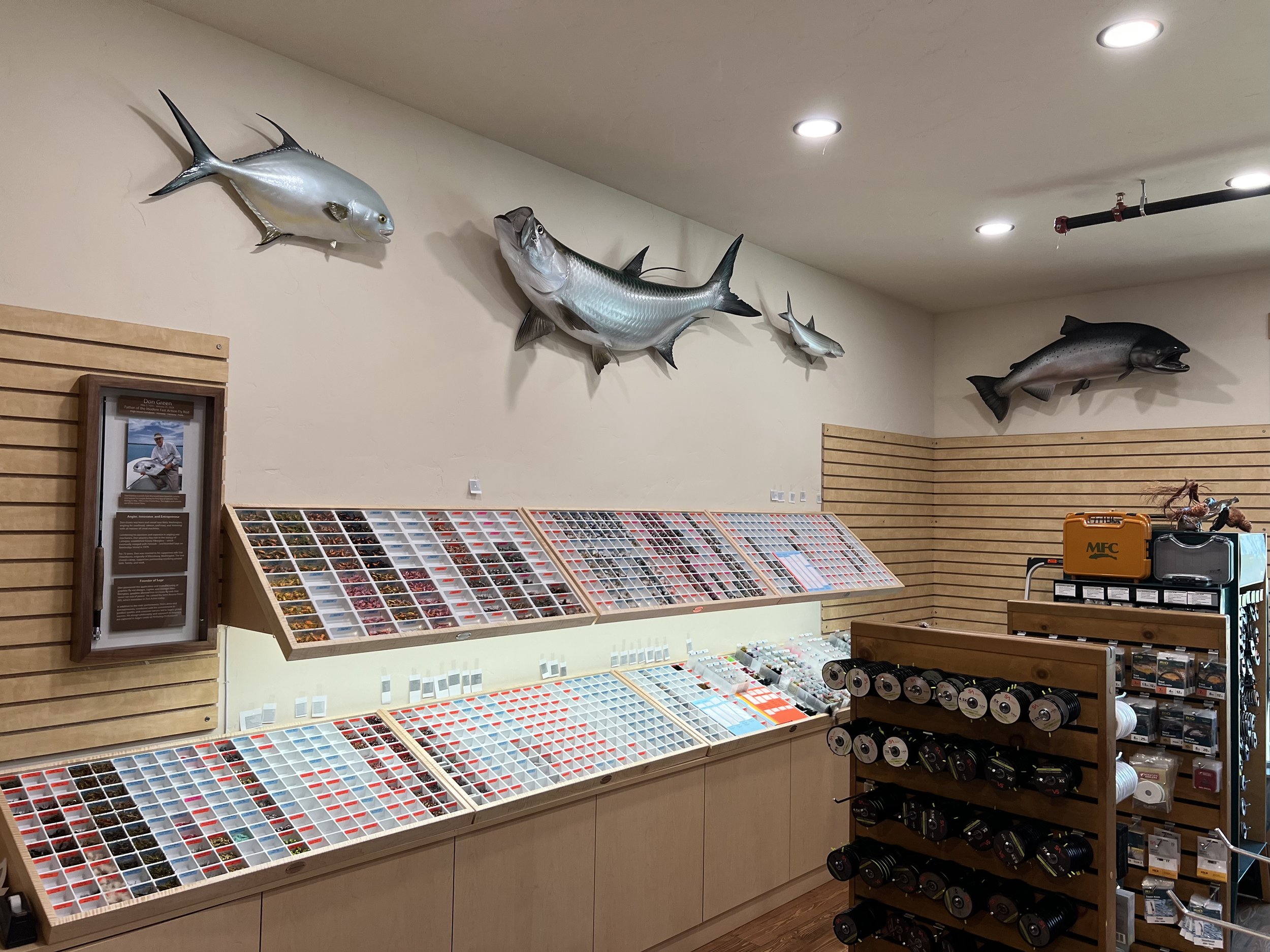
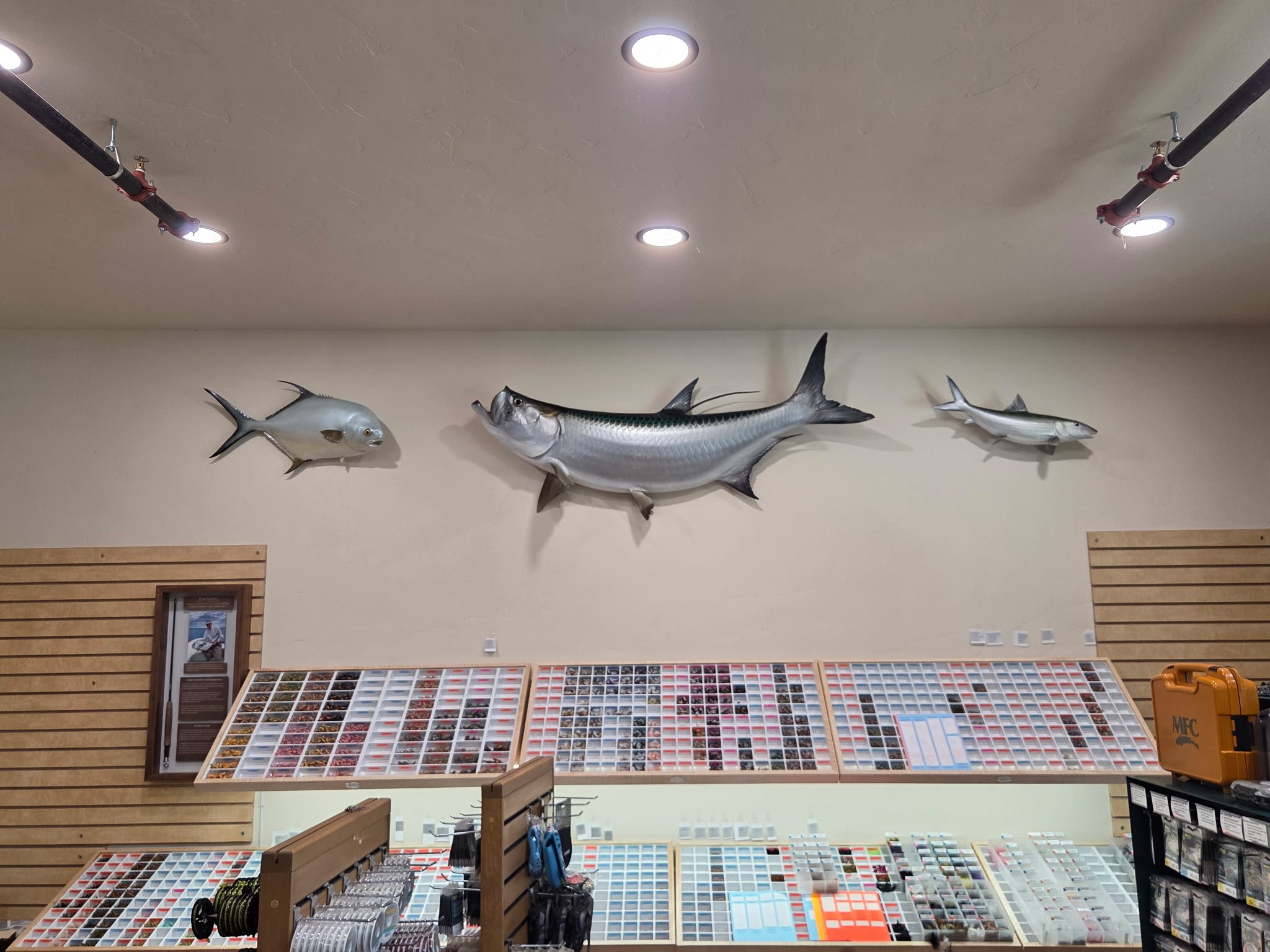
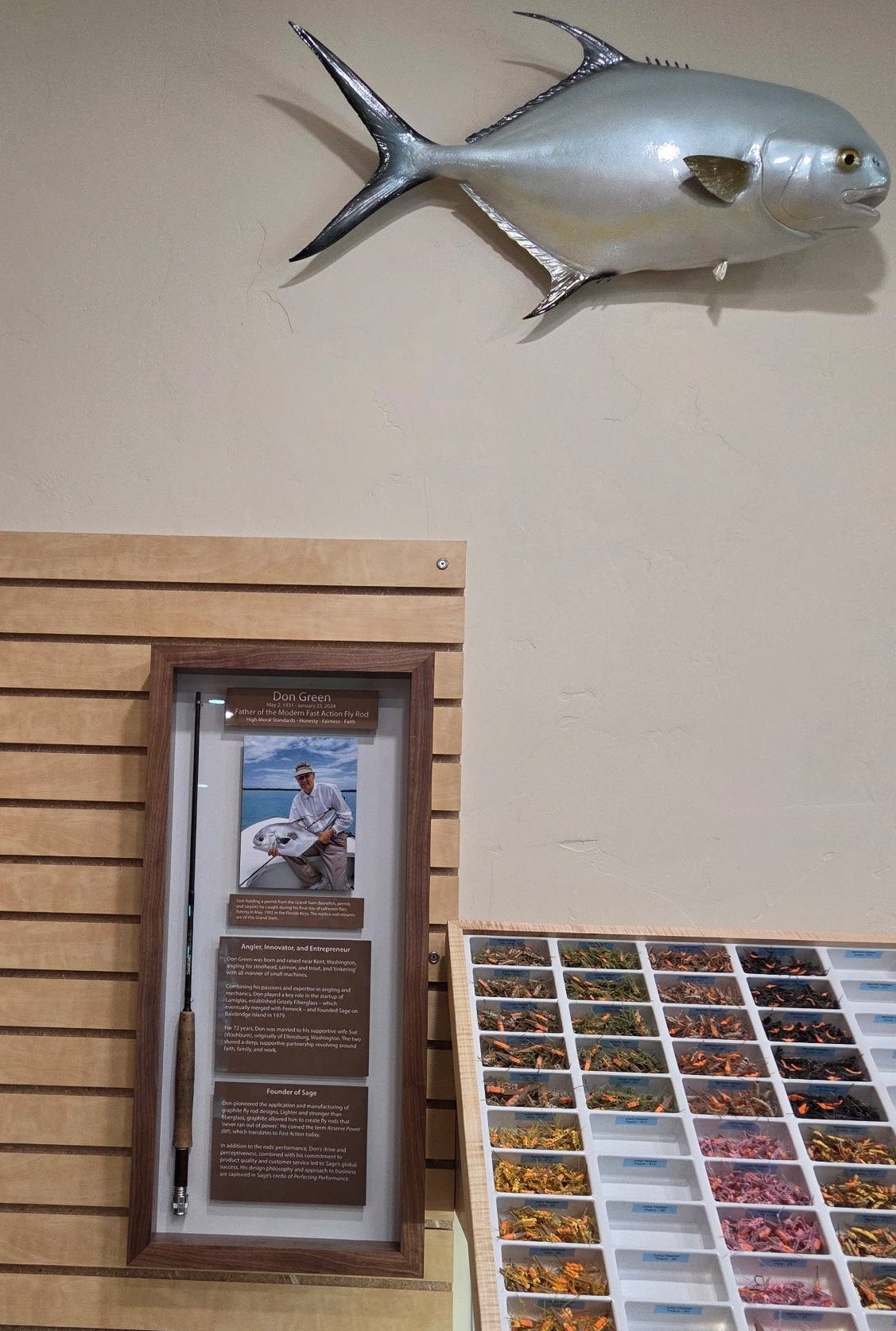
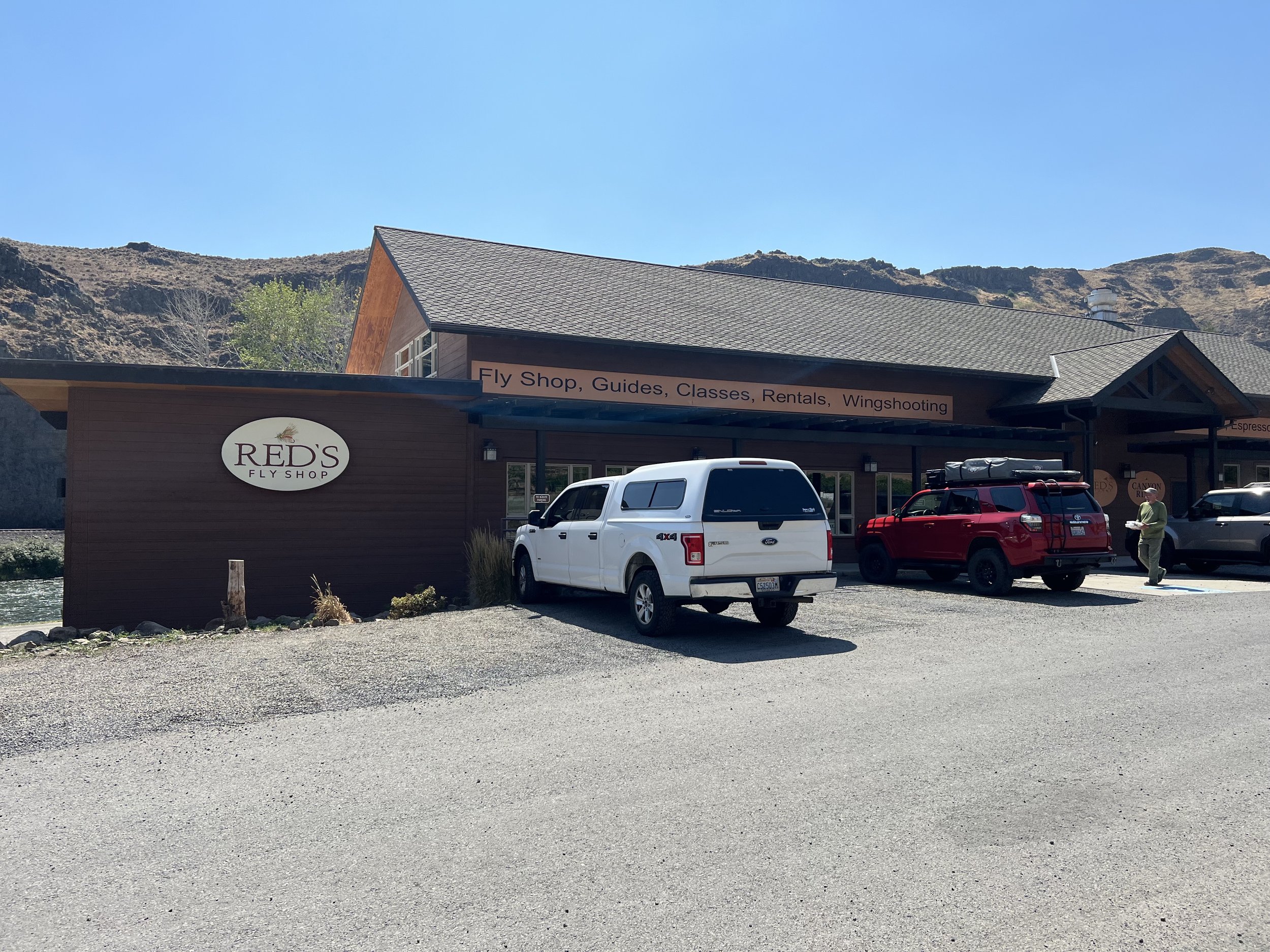
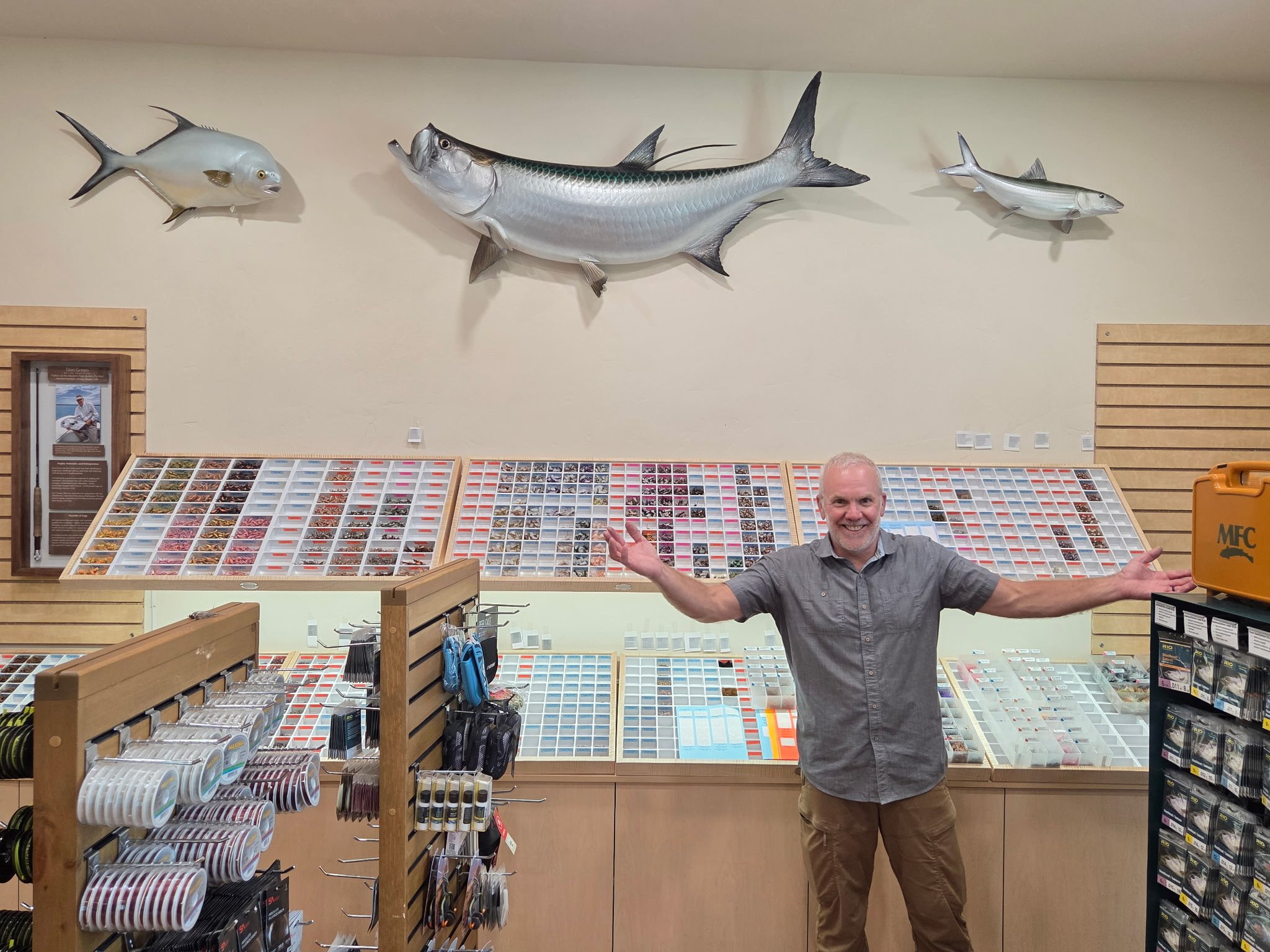
For more on Don Green, see:
“Our Fly Fishing Company Story” from Sage
“Sage Founder Don Green Passes Away” from Fly Fisherman Magazine


